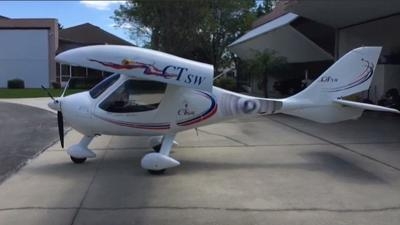Commercial Pilot, 90, Fatally Injured In July 2017
The NTSB has released a probable cause report from an accident which occurred July 1, 2017 which fatally injured 90-year-old commercial-rated pilot Jerry Naylor.

Naylor was making a personal flight in a Flight Design CTSW registered to Mooney of Monticello Inc. Naylor had departed from the Montecello, IA municipal airport with his dog, which weighed between 70 and 75 pounds, in the passenger seat of the airplane.
According to the report, a witness, who was piloting another airplane in the traffic pattern, reported that, while he was on the downwind leg, he saw the accident airplane on final approach to the runway. The witness subsequently lost visual contact with the accident airplane as he turned his airplane onto the base leg. The witness did not see the accident airplane on the runway or taxiway after he turned onto final approach. The witness conducted a go-around and then saw the accident airplane in a cornfield adjacent to the runway. After the accident, the witness saw the pilot's dog running out of the cornfield where the airplane had crashed.
Based on available ground track and engine data, the airplane crossed the runway 27 threshold at a calculated airspeed of 48 knots. About 3 seconds later, the airplane turned right away from the runway heading, and the engine speed increased to takeoff power. The airplane subsequently descended right wing down into the cornfield about 250 ft north of the runway centerline. The final calculated airspeed was about 44 knots. Although the airplane's wings-level aerodynamic stall speed with the wing flaps fully extended was 39 knots, the stall speed would have increased exponentially with the bank angle as the airplane turned right.
According to the pilot's son, the pilot routinely flew with his dog. He added that the pilot had installed a homemade, removable, plywood device to prevent the right-seat passenger (or his dog) from inadvertently contacting the rudder pedals during flight. Although the device was not approved to be installed in the airplane, there was no evidence that it interfered with the full movement of either control stick or the pilot-side rudder pedals. Postaccident examination of the airplane and engine did not reveal any evidence of preimpact mechanical malfunctions or failures that would have precluded normal operation. Given the ground track and engine data, it is likely that the dog contacted the aileron and/or stabilator controls during landing, which resulted in the pilot's loss of airplane control and a subsequent aerodynamic stall at a low altitude when the airplane exceeded its critical angle of attack.
The National Transportation Safety Board determined that the probable cause of this accident was the pilot's decision to fly with his large dog in the two-seat, light sport airplane, and the dog's likely contact with the flight controls during landing, which resulted in the pilot's loss of airplane control and a subsequent aerodynamic stall when the airplane exceeded its critical angle of attack.
(Source: NTSB. Image from file. Not accident airplane)
 Classic Aero-TV: Remembering Bob Hoover
Classic Aero-TV: Remembering Bob Hoover ANN FAQ: Follow Us On Instagram!
ANN FAQ: Follow Us On Instagram! ANN's Daily Aero-Linx (05.15.24)
ANN's Daily Aero-Linx (05.15.24) ANN's Daily Aero-Term (05.15.24):Altimeter Setting
ANN's Daily Aero-Term (05.15.24):Altimeter Setting Aero-News: Quote of the Day (05.16.24)
Aero-News: Quote of the Day (05.16.24)



